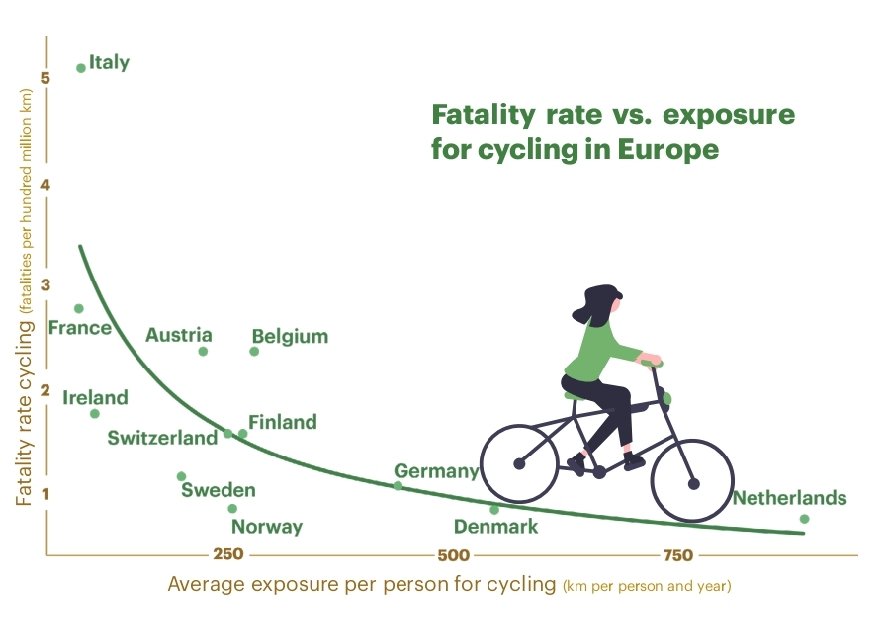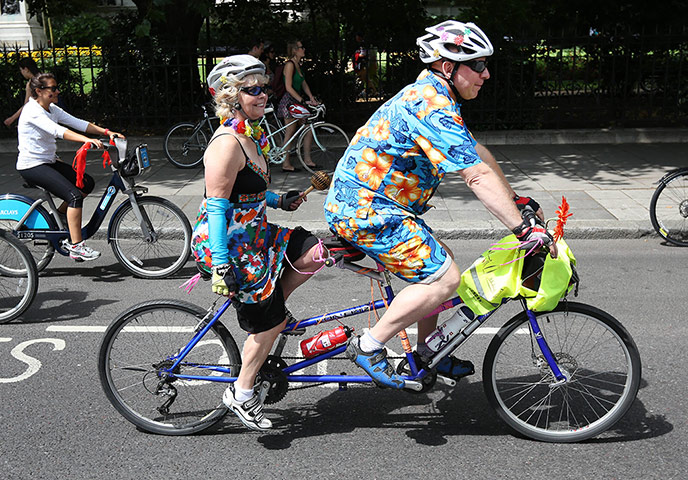“Walking and cycling should become the norm for short journeys rather than driving a car, the government’s health advisory body has recommended in an attempt to tackle a national epidemic of inactivity and obesity which now causes as much harm as smoking.
In strongly-worded advice, which places significant pressure on the government to increase the extent of safe walking and cycling routes, theNational Institute for Health and Clinical Excellence (Nice) urges local authorities, health bodies, workplaces and schools to do all they can to assist people in active travel.
The report notes that almost two-thirds of men and nearly three-quarters of women in England are not sufficiently active to maintain their health, with the results little better for children.
This amounts to a significant public health problem to which increased walking and cycling is a key solution, said Dr Harry Rutter, an adviser to the Department of Health-funded National Obesity Observatory, who led the Nice study.
“Only a minority of people in England get enough physical activity to improve their health,” he said. “This creates a huge and often invisible burden of illness and reduced quality of life, but most people seem to be unaware of the scale of that burden. Across the population, lack of physical activity causes roughly the same level of ill-health as smoking does.
“We all face barriers in changing our lifestyles and many of us feel we don’t have the time or the inclination to add regular physical activity into our lives. But walking and cycling – to work, to school, to the shops or elsewhere – can make a huge difference. It’s an opportunity to make these activities part of normal routine daily behaviour.”
The 126-page report lays down recommendations for many public and private institutions, which have no statutory force but carry some influence given Nice’s position. They also coincide with the advent next April of the NHS’s health and wellbeing boards, where local health chiefs will collaborate to improve community health.
It urges local authorities to devise a coherent, long-term plan for boosting active travel to be at the centre of every policy, avoiding the piecemeal efforts exemplified by the cursory and suddenly-vanishing bike lanes familiar to most UK cyclists. Schools are being advised to provide secure bike parking and introduce “walking buses” where pupils walk to and from school in a supervised group, with employers similarly guided on helping staff ditch their cars.
The report’s authors say they are aware of the ambition of their plan, with the average Briton now walking or cycling 80 miles a year less now than they did a decade ago and the percentage of journeys made by bike remaining at about 2%, against 26% for the Netherlands and 19% in Denmark.”
(article written by Peter Walker, The Guardian)

/cdn.vox-cdn.com/uploads/chorus_image/image/66211736/car_congestion_final.0.jpg)







